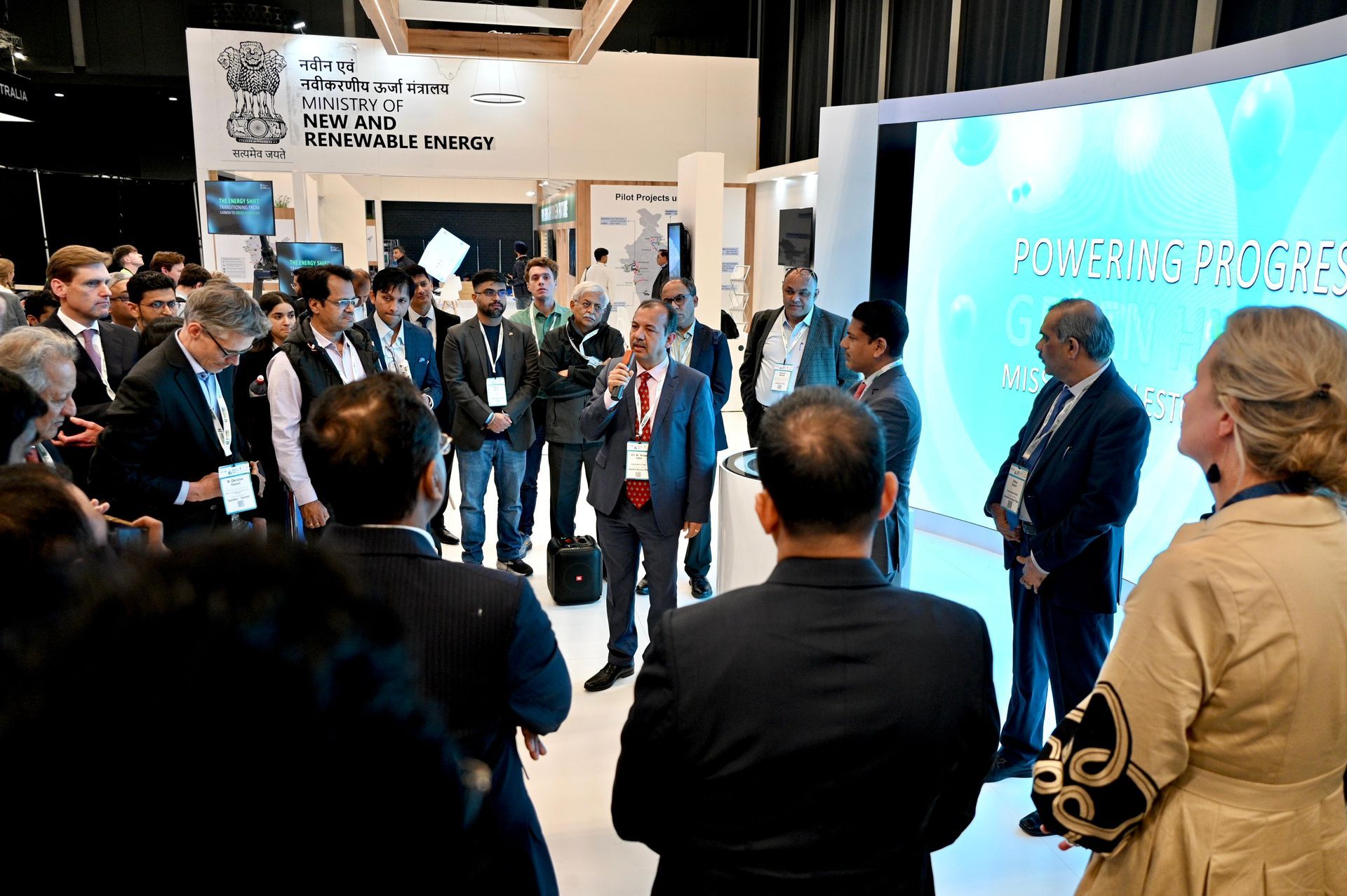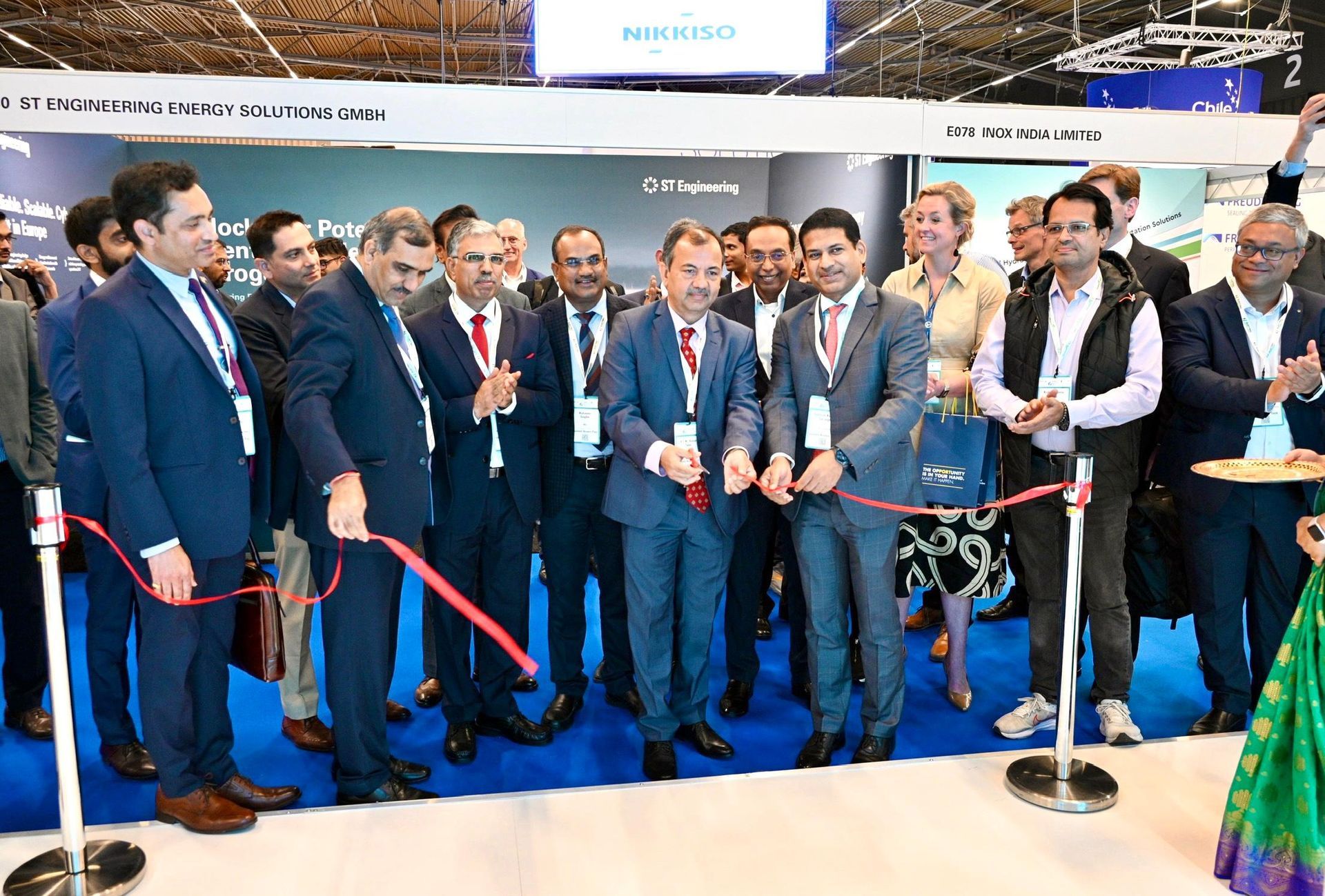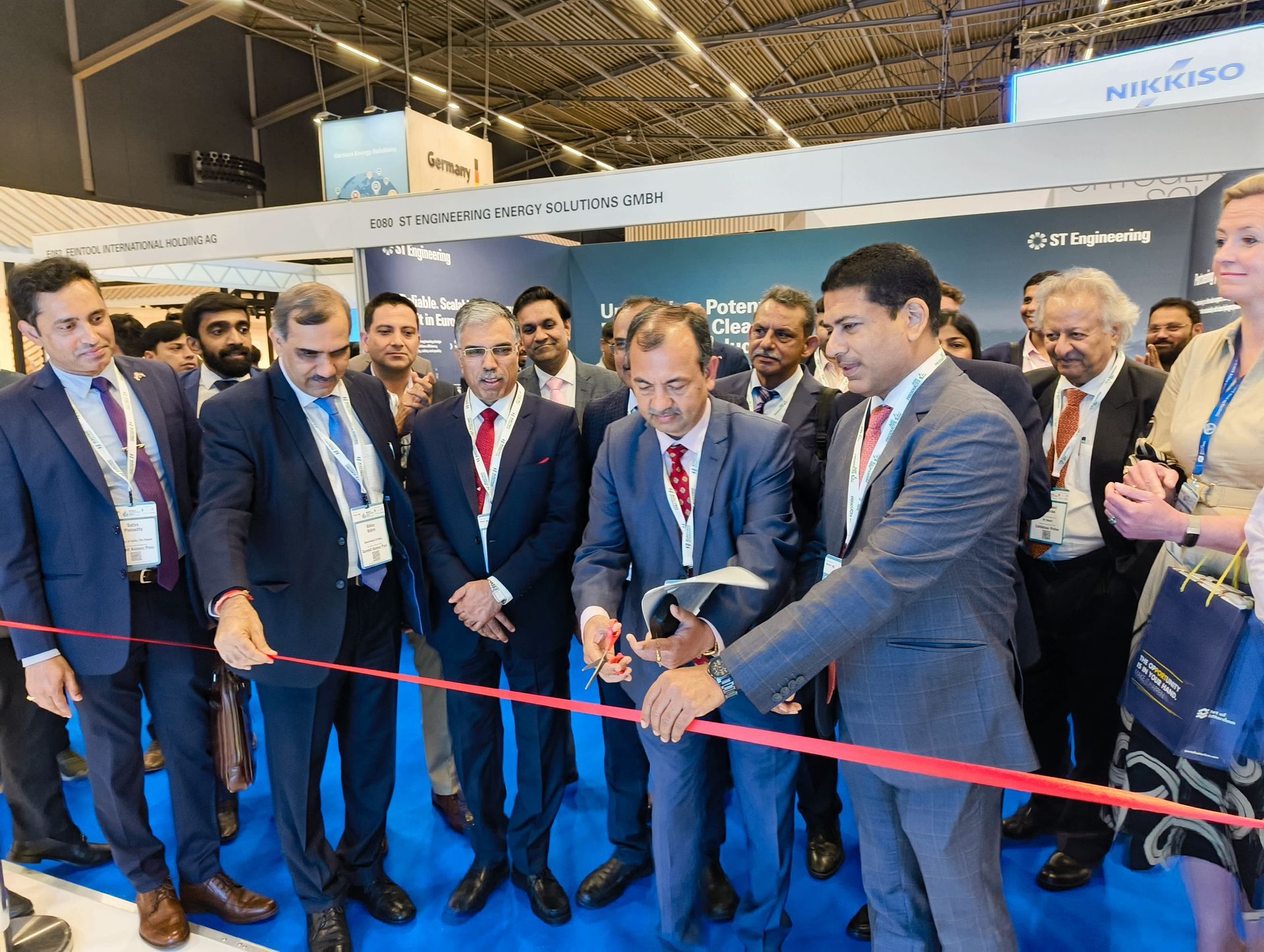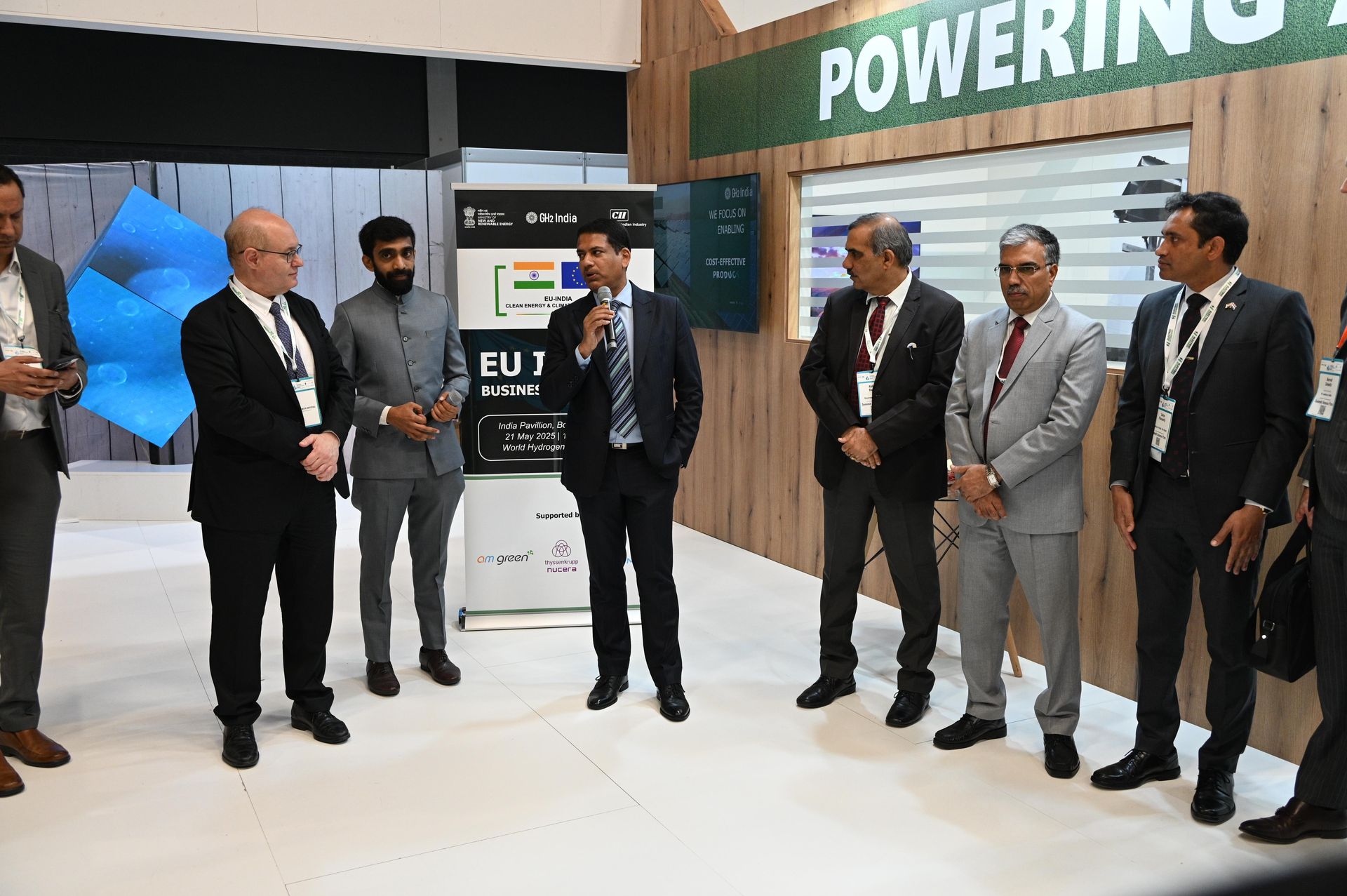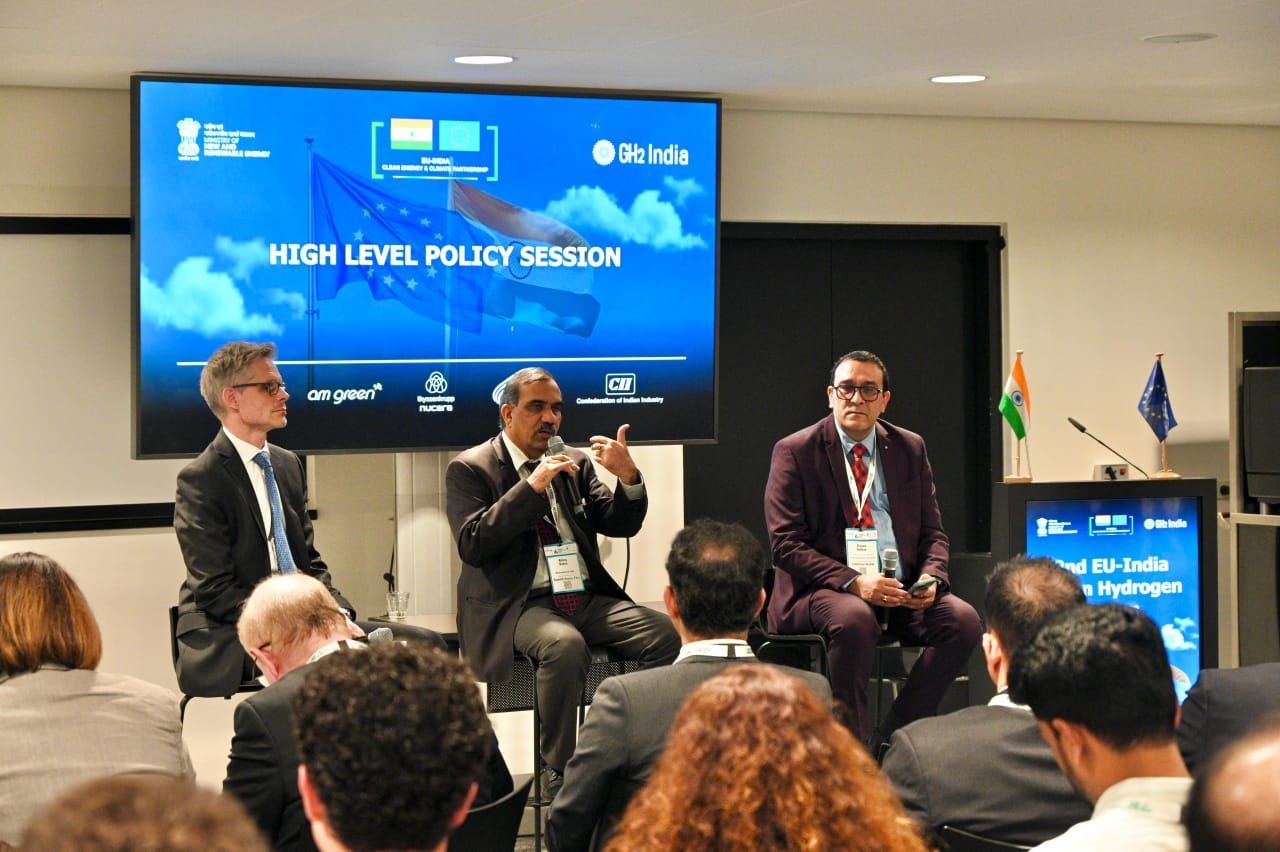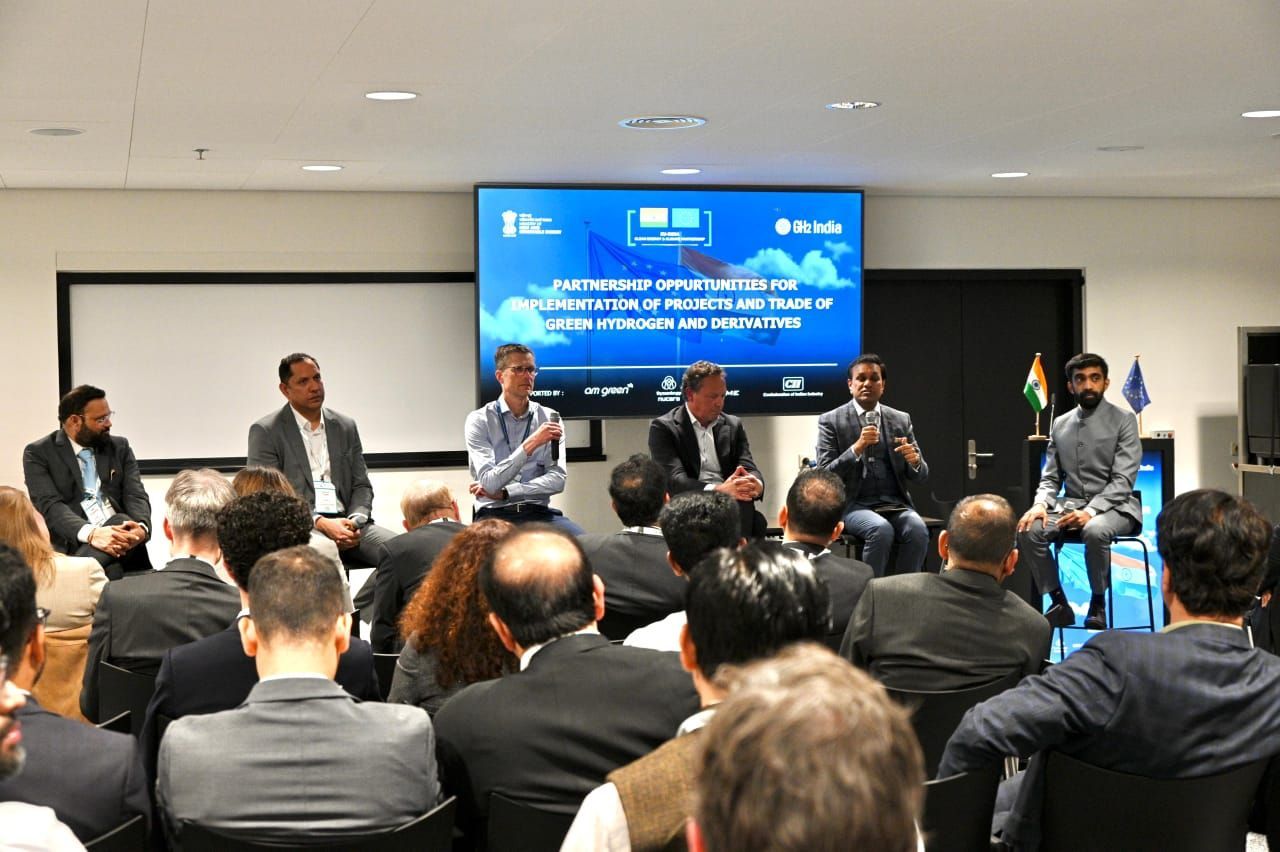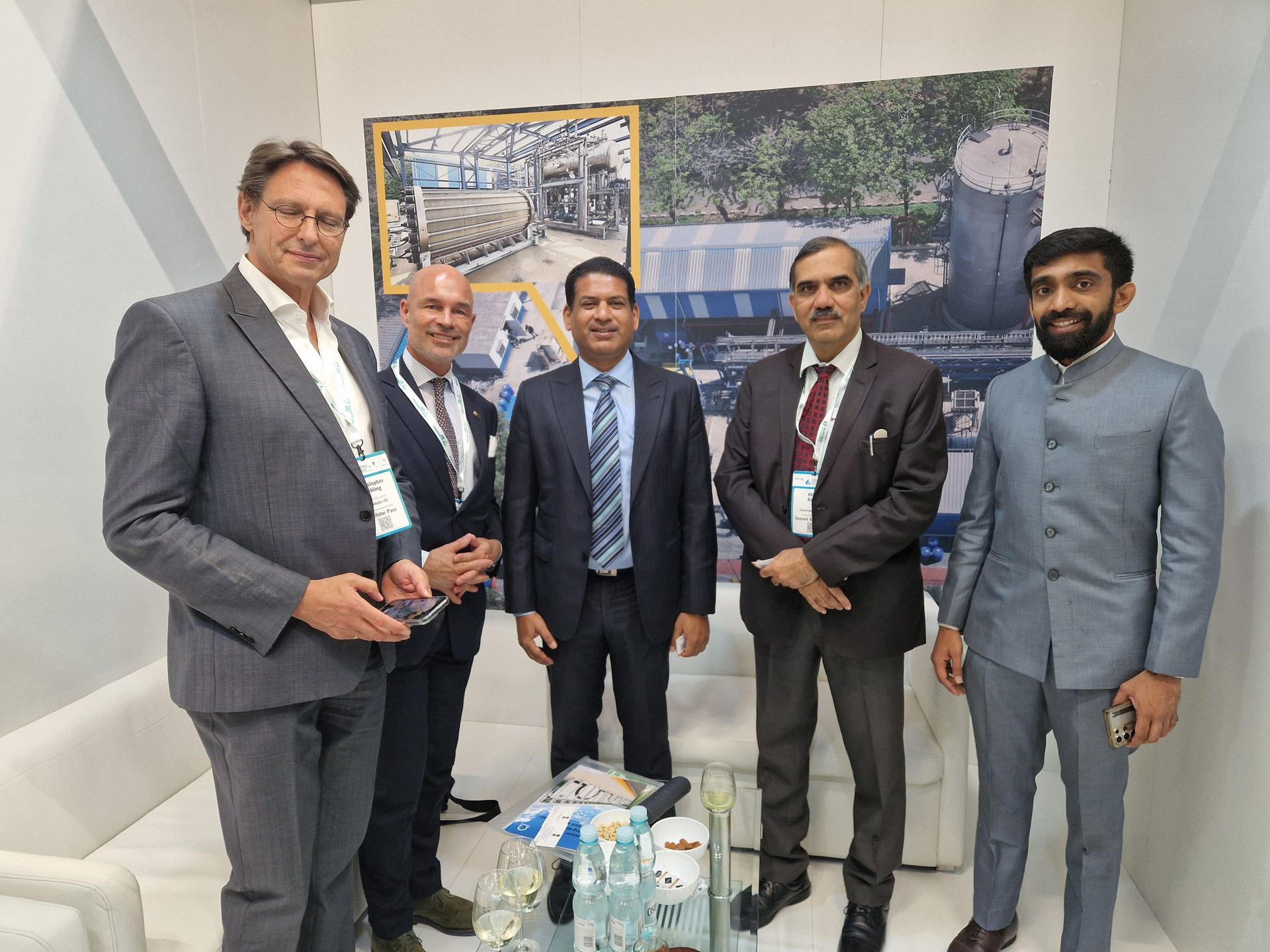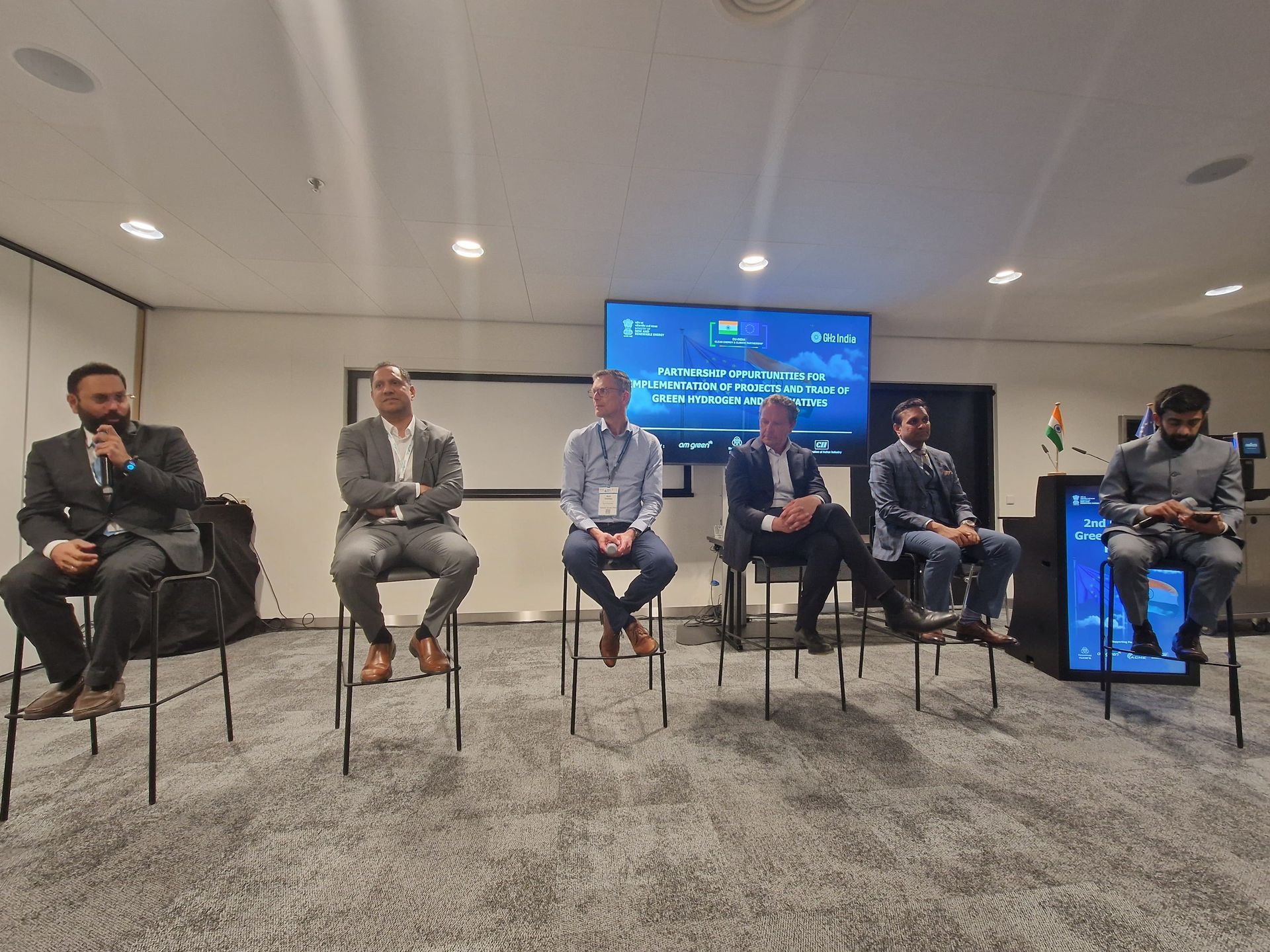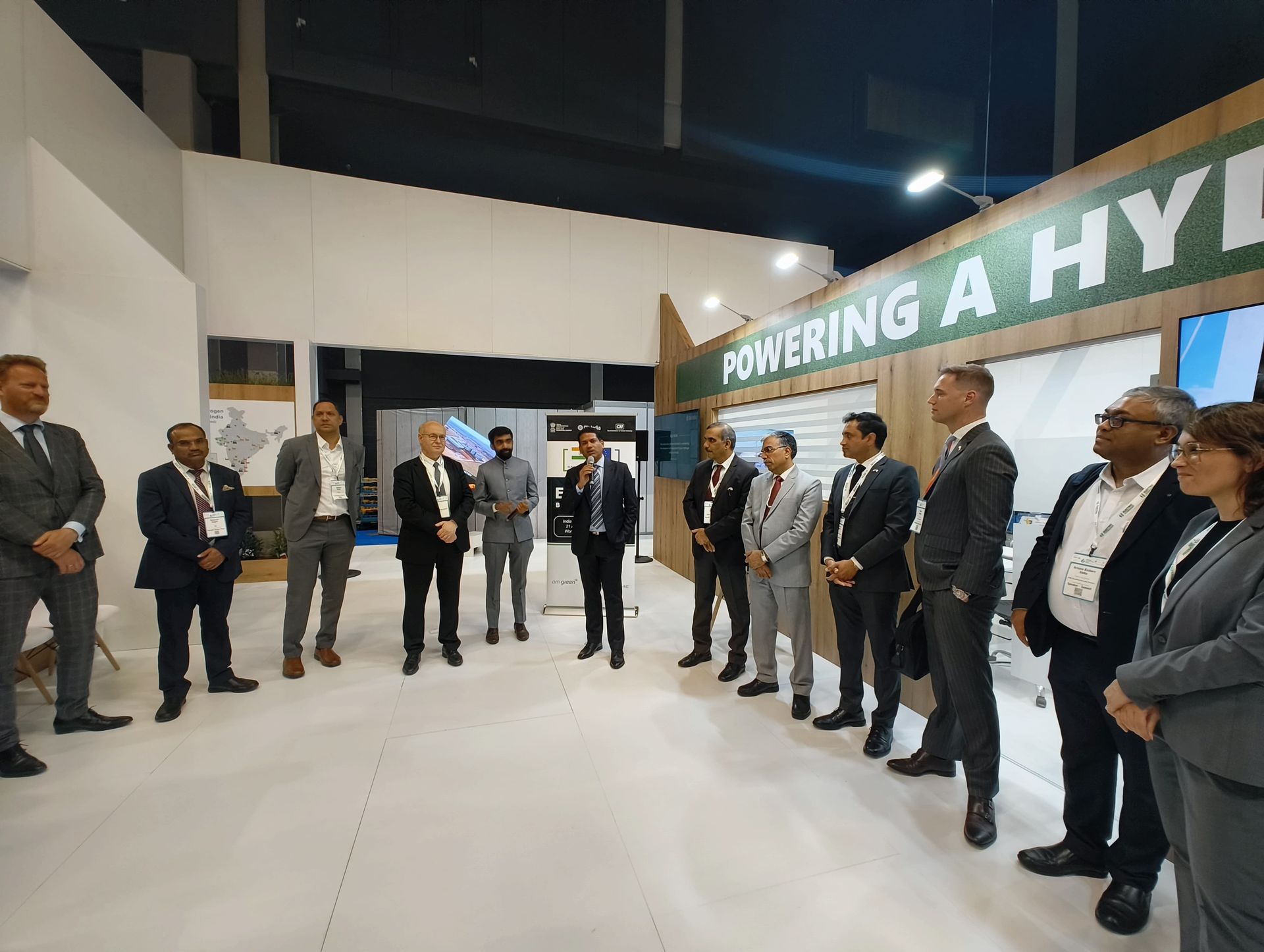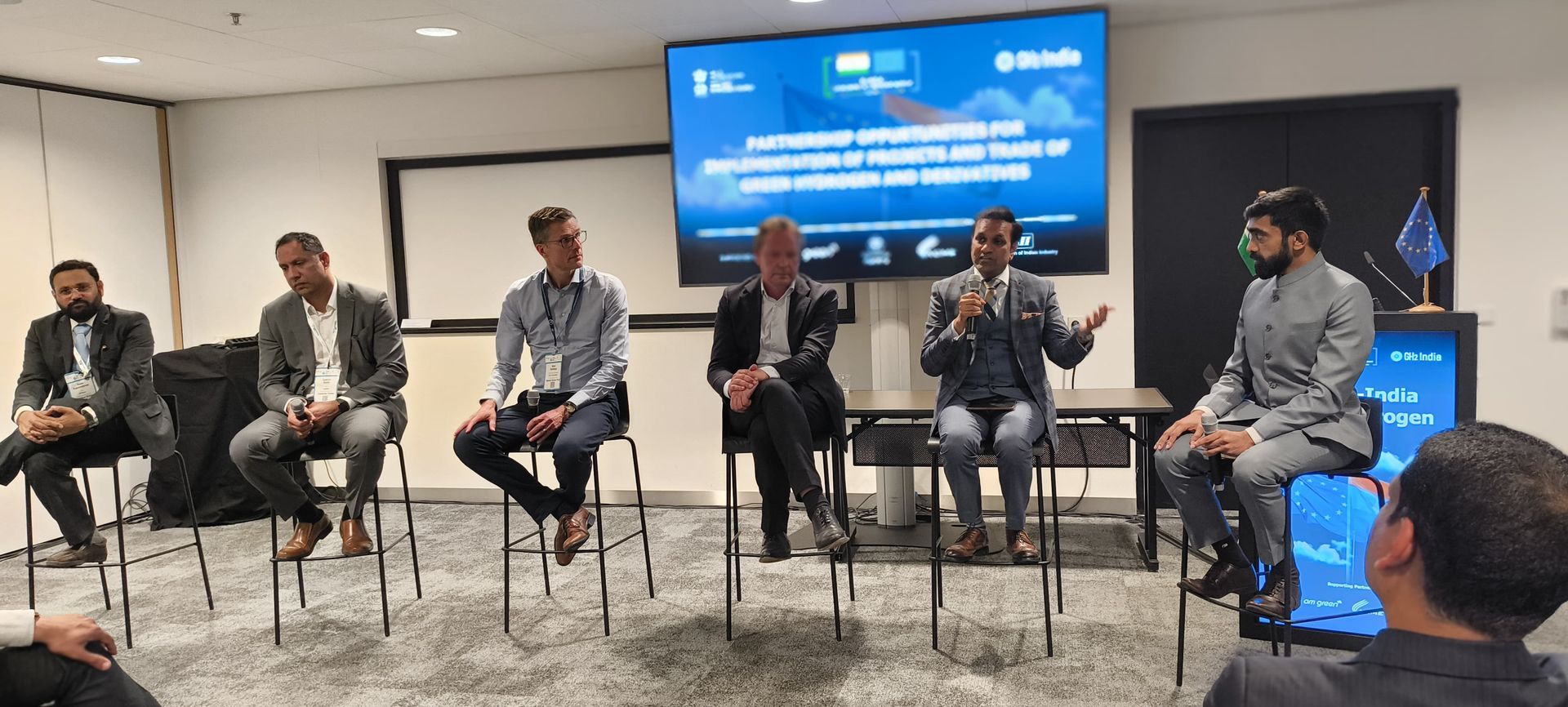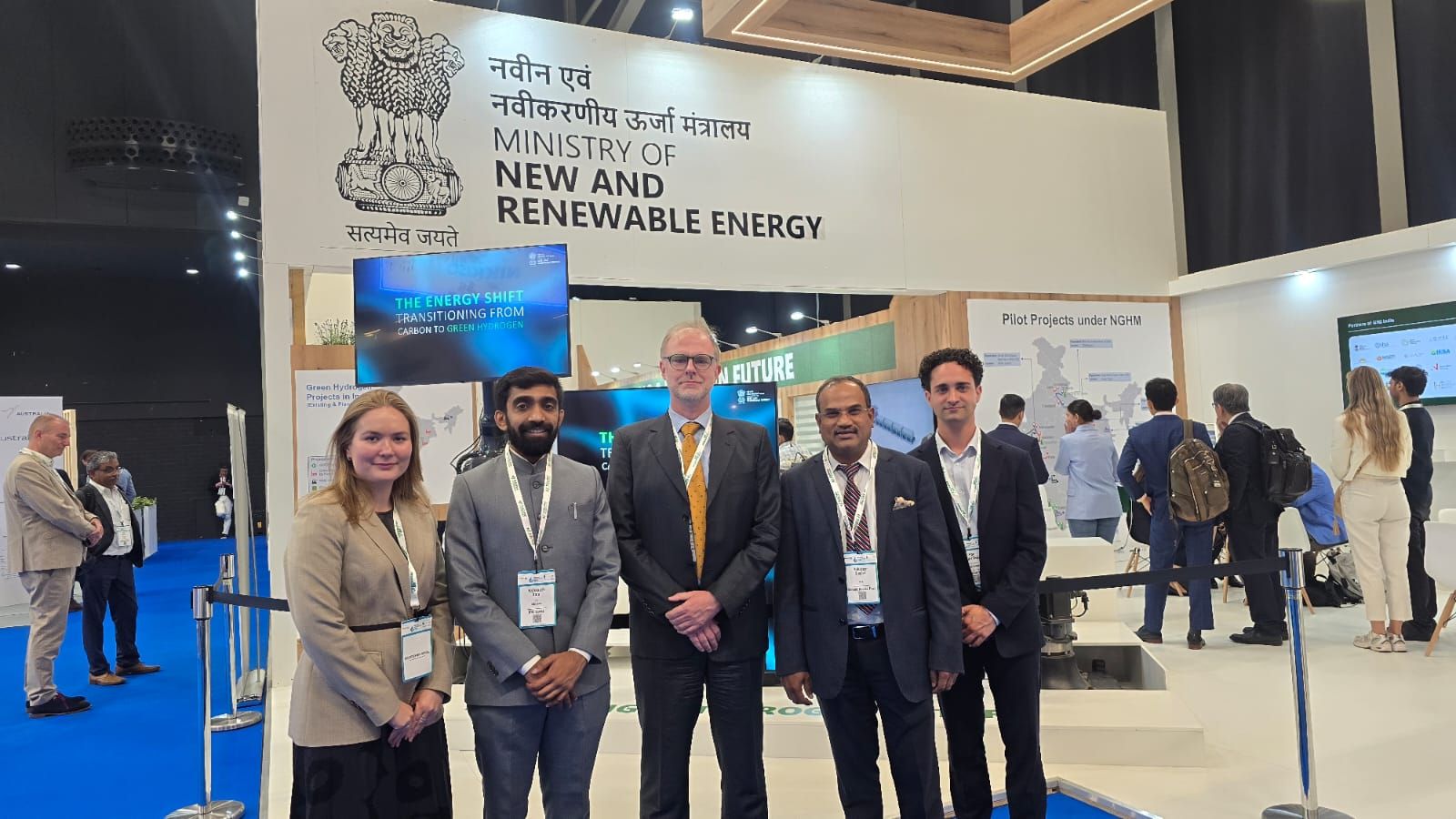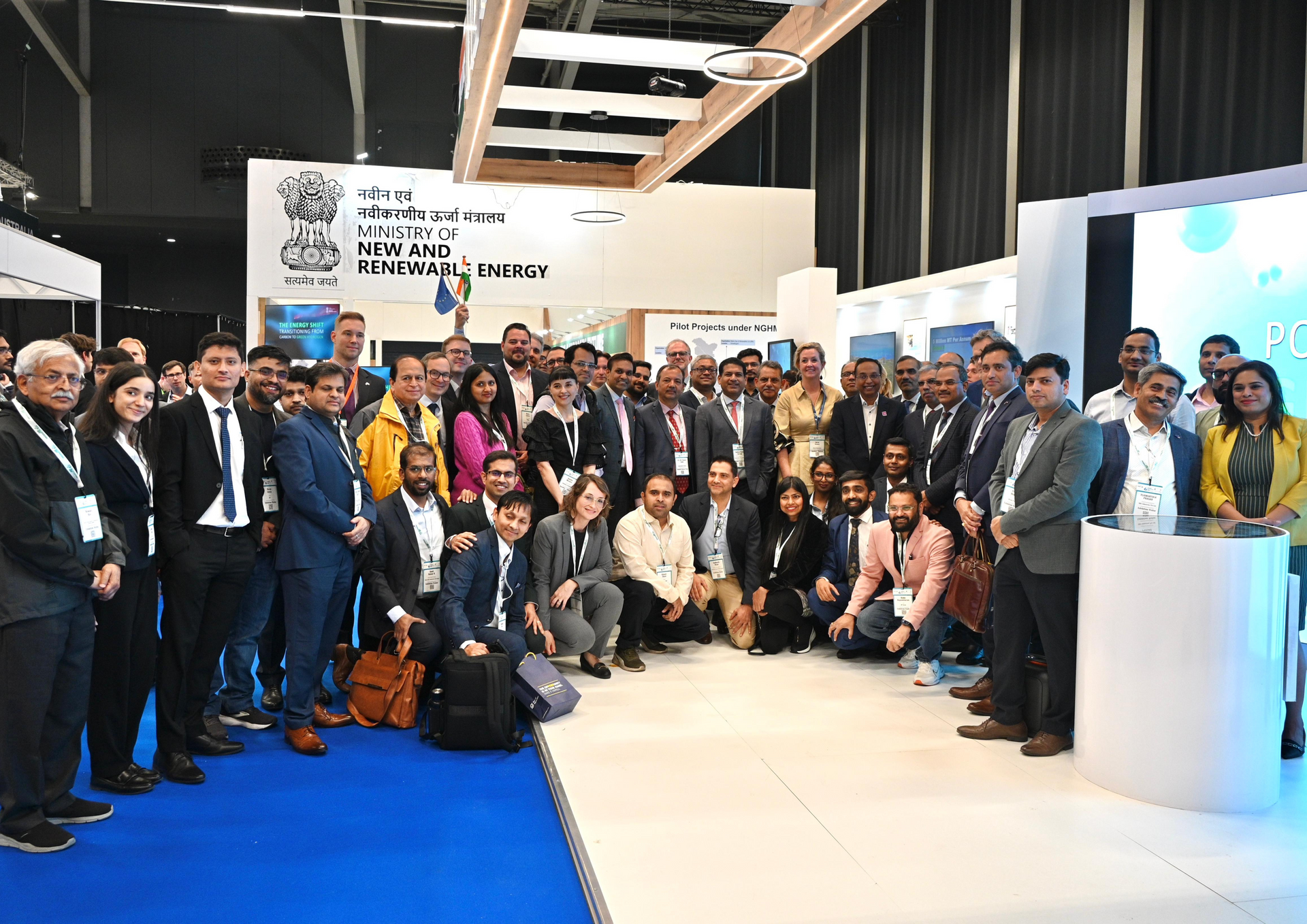
Ministry of New and Renewable Energy, with GH2 India and CII, led a high-powered Indian delegation at the World Hydrogen Summit 2025, showcasing India’s rapid transition from hydrogen ambition to execution, and forging critical international partnerships to drive cross-border trade in green hydrogen.
From high-level dialogues to technical deep-dives, India used the summit to build momentum around its export ambitions, policy leadership, and industry readiness.
Key Takeaways from the Indian Delegation’s Engagement:
India–EU Hydrogen Diplomacy: From Dialogue to Delivery
India and the EU held a series of high-level sessions to align on certification, infrastructure, and financing. A roundtable co-hosted by MNRE and the European Commission surfaced three urgent priorities:
Certification Alignment: Incompatibilities between India’s GHCI and EU’s RFNBO standards could risk market access. A bilateral certification working group was proposed to harmonize MRV, registry systems, and lifecycle emissions tracking.
Bridging the Finance–Offtake Gap: Indian developers called for greater support from EU institutions like KfW and EIB to catalyze project bankability. A joint Hydrogen Project Pipeline Platform was proposed to improve visibility for investors.
Infrastructure Coordination: With export infrastructure advancing in India, collaboration with European ports on formats, bunkering readiness, and customs alignment was seen as essential.
Strategic Partnerships Announced
MoU Signed: GH2 India anchor member AM Green signed an MoU with the Port of Rotterdam to develop a green fuel terminal—an important milestone for EU–India hydrogen logistics.
India–Netherlands Green Hydrogen Dialogue: With the Netherlands as a key EU importer, both governments discussed fast-tracking a Green Hydrogen Corridor, accelerating certification and port-readiness.
Technology & Market Deep Dives
Decarbonizing Maritime Transport
Session on green shipping explored India’s role in meeting IMO’s upcoming MEPC 83 regulations. Indian green ammonia exporters and EU port officials highlighted the need for:
Investment in multi-fuel bunkering
Regulatory clarity on carbon pricing
Equitable market design to protect developing economies
India’s Hydrogen Valleys & Industry Scale-up
India’s Hydrogen Valley projects like Pudimadaka, Pune, Bhubaneshwar, and Jodhpur were showcased as innovation testbeds. These clusters are expected to unlock real-world insights into off-grid hydrogen deployment, with INR 486 crore already committed.
Companies like ACME, ReNew, and AM Green unveiled progress on giga-scale export projects, with ReNew’s 300,000 TPA and AM Green’s 1 MTPA facility already reaching financial closure. However, leaders flagged that secure long-term offtake agreements remain the missing link for unlocking financing.
Certification: The Final Frontier
At the India–EU Certification and Compliance session, sharp regulatory mismatches were discussed:
India’s GHCI currently applies emissions limits only up to the production gate, whereas the EU includes transport and end-use.
EU auditors raised concerns over subsidy stacking and double-counting of carbon benefits.
Panelists urged pre-certification reviews and digital serial tracking of hydrogen molecules to ensure compliance and prevent market exclusion.
With clarity on scale, cost, and capability, India is now export-ready. But translating supply into trade demands fast-tracked action on certification, financing, and port logistics.
As stated by MNRE Secretary Santosh Sarangi:
“Policy alignment is no longer optional. For green hydrogen trade to succeed, infrastructure and standards must now move at the pace of ambition.”
May 19 2025 00:00
Rotterdam, Netherlands

